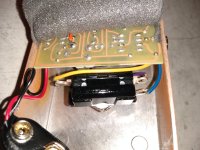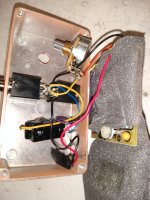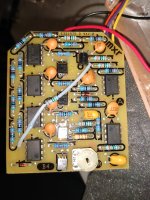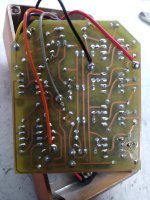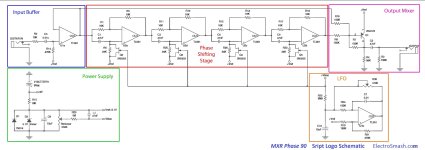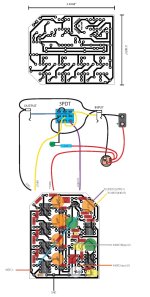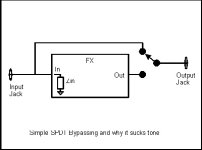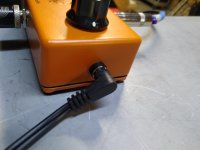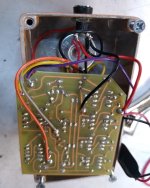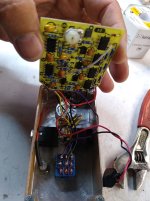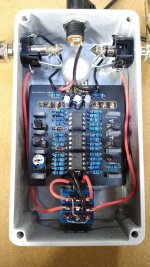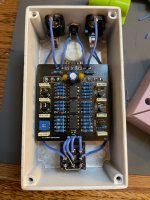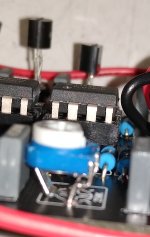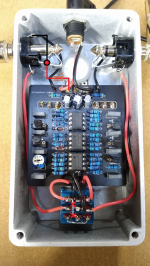I just finalized an XC Phase pedal. I have one question and one issue. The thing is functioning appropriately and engaging/disengaging.
The issue I have is that there is a loud audible "POP" when engaged (not when disengaging)! I have an actual MXR CSP026 74 Vintage MXR Phase 90 I purchased in 2020. That thing sounds killer and sweet and there is absolutely no popping when engaging or disengaging, so wondering what's up?!? I've built literally hundreds of pedals and was a tech and sr. tech when i started my career in engineering almost 30 years ago, so it's built right and has to do with something else.
This must be a Rev. 1 board, as yes, Q1-Q4 are installed backward from the original silk screen, fyi.
The second thing and question is how to set the trimmer? I know a lot of information just says set it in the middle of the phasing, but I'm wondering if there is something a little more definitive, like....if 9.00VDC input, set drain at 4.50VDC exactly OR to via pinX and monitor on oscilloscope until just before clipping on the screen....both would be pretty definitive.
Since I have an actual one, I'm wondering if there is anything I can look for on it, like a voltage at a certain pin or something on the oscilloscope?? Then I can copy the same thing I'm seeing on the actual unit, to the clone??!?
Also, when making these modulate components like Phasers or Choruses, the JFETs (2N5952) need to be matched. To ensure they are, what is the best method to test them??
PLEASE ADVISE. Thanks in advance.
The issue I have is that there is a loud audible "POP" when engaged (not when disengaging)! I have an actual MXR CSP026 74 Vintage MXR Phase 90 I purchased in 2020. That thing sounds killer and sweet and there is absolutely no popping when engaging or disengaging, so wondering what's up?!? I've built literally hundreds of pedals and was a tech and sr. tech when i started my career in engineering almost 30 years ago, so it's built right and has to do with something else.
This must be a Rev. 1 board, as yes, Q1-Q4 are installed backward from the original silk screen, fyi.
The second thing and question is how to set the trimmer? I know a lot of information just says set it in the middle of the phasing, but I'm wondering if there is something a little more definitive, like....if 9.00VDC input, set drain at 4.50VDC exactly OR to via pinX and monitor on oscilloscope until just before clipping on the screen....both would be pretty definitive.
Since I have an actual one, I'm wondering if there is anything I can look for on it, like a voltage at a certain pin or something on the oscilloscope?? Then I can copy the same thing I'm seeing on the actual unit, to the clone??!?
Also, when making these modulate components like Phasers or Choruses, the JFETs (2N5952) need to be matched. To ensure they are, what is the best method to test them??
PLEASE ADVISE. Thanks in advance.
Last edited:


